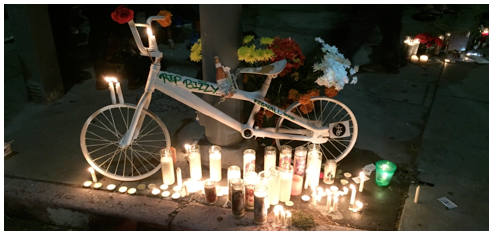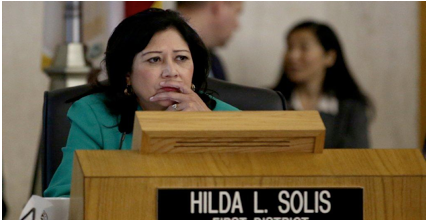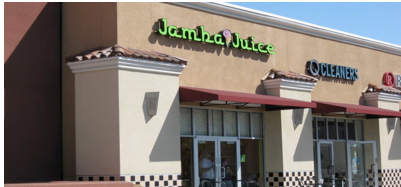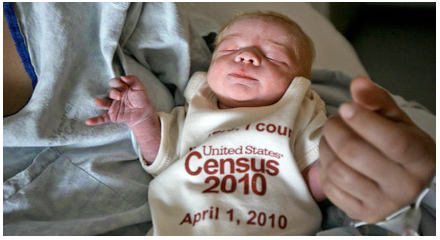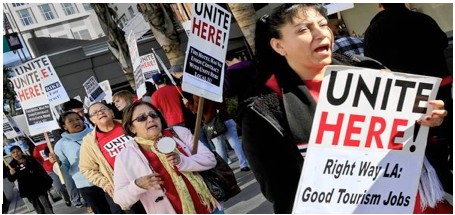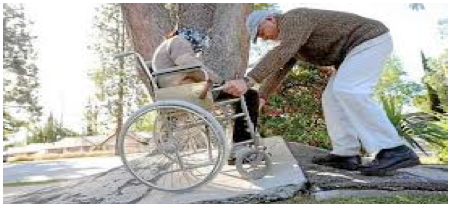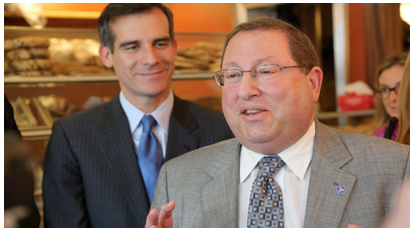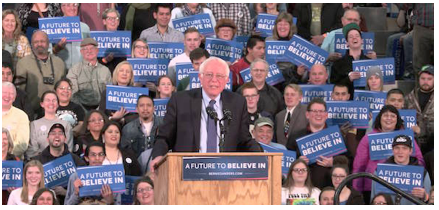BUTCHER ON LA-“Instead of sleeping on the sidewalks, they’ll help us to build the sidewalks.”
— Paul Krekorian, Los Angeles City Councilmember, Chair, Budget & Finance Committee, commenting at 2016-17 budget hearings.
Last Friday, Los Angeles Mayor Eric Garcetti “signed a landmark Executive Directive to restore core city services and create long-awaited job opportunities for LA’s most under-served communities, as his administration prepares to hire thousands of new employees.
“Executive Directive #15 was developed with a Back to Basics approach to strategically restore critical City services. The directive builds upon a historic labor agreement the Mayor signed in partnership with the City Council and the Coalition of Los Angeles City Unions this past March, which included long-term savings of more than $16 million for the City's budget, and a goal of hiring more than 5,000 new civilian employees over the next three years. The directive will also ensure that all Angelenos have equitable access to good paying city jobs.
“With 46 percent of our City workers eligible to retire by 2018, LA has an unprecedented opportunity to rethink the way we deliver services to meet the 21st century demands of our residents…Today we start that transformation. As the third-largest employer in our County, we are prioritizing local hiring -- to ensure that every qualified Angeleno has an equal opportunity to apply for full-time city jobs. Everyone deserves a chance at success.”
The Mayor’s Executive Directive implements part of the 4-year collective bargaining agreement negotiated between the City and the Coalition of City Unions, ratified in March 2015, covering 20,000 city workers in six international unions.
Reverend William Smart, Jr., president and CEO of the Southern Christian Leadership Conference of Southern California, and Alice Goff, president of the American Federation of State, County and Municipal Employees (AFSCME) Local 3090 and AFSCME District Council 36, explain the significance of the deal in the October 6, 2015 edition of Capital & Main:
“In an effort to stabilize the City budget, LA officials turned first and foremost to its workforce for cost-saving solutions. City workers stepped forward and made very real sacrifices, such as increasing worker pension contributions to the highest in the state; accepting more costly healthcare co-pays in order to lower healthcare costs; and taking voluntary early retirement. Five thousand jobs were cut, leading to severe cuts to City programs and services.
“The ramifications of these cutbacks extended into our neighborhoods. Trees went untrimmed, alleyways were strewn with uncollected trash, cracked sidewalks were neglected and school intersections went unguarded, compromising quality of life and public safety. Middle-class City jobs, which for decades provided a higher standard of living for tens of thousands of people and brought new opportunity to communities of color, were put at risk.
“Thus was born ‘Fix LA,’ a movement that calls attention to the causes of LA’s economic hardship and puts a face on the serious impacts to communities. Over the course of a year, faith and community leaders, City workers and neighborhood groups united to create public awareness of the toll of the crash brought on by Wall Street’s abusive practices. We demonstrated at big banks to highlight their culpability in the crash of Wall Street and to their bad faith dealings with the City of Los Angeles. We held media events across Los Angeles to shine a spotlight on the unmet needs of neighborhoods. Our message has been simple: It’s time to fix LA.
“City workers took those issues and concerns to heart and to the bargaining table. As part of its proposals, the Coalition of City Unions raised items that affected workers and residents alike. The Coalition platform included ideas aimed at improving services to residents, holding big banks accountable, creating jobs and job-training programs for residents and devising cost-saving and revenue-enhancing opportunities for the City.
“The agreement between the City of Los Angeles and the Coalition of LA City workers is a true win-win. The newly ratified contract calls for the City to hire an additional 5,000 civilian workers by Fiscal Year 2017-18 and create a Strategic Workforce Development Task Force to oversee the process. The ripple effect of this provision is immeasurable. It represents true outreach to a local workforce, providing job training and access to quality civil service jobs. In turn, communities will begin to see a restoration of services.
“The agreement also improves transparency of the City’s outsourcing contracts by establishing a public online database of City contracts and adding good government practices. Under the agreement, the City Council will establish a Commission on Revenue Generation, which will develop recommendations for raising City revenue through means such as enforcement of blight ordinances, commercial property reassessments and tax loopholes and other mechanisms. In addition the agreement protects quality, middle-class jobs by ending overuse of part-time workers, safeguarding health care and preserving retirement security, all in a fiscally responsible manner.
“With the economy recovering, and the City possessing the greatest reserve fund in its history, it’s time to rebuild and restore the essential jobs and services that have been decimated over the last eight years. Our communities deserve no less.”
As reported in MyNewsLA.com Hope for homeless, ex-criminals: 5,000 new LA city jobs on April 29, 2016: “Mayor Eric Garcetti ordered city departments Friday to hire thousands of new employees over the next three years, with a focus on recruiting people who have been homeless, possess criminal records or face other challenges to finding jobs.
“Under an agreement with municipal employee unions, the city has set a goal of hiring 5,000 people to fill thousands of jobs frozen as a result of an unsettled economy and to account for the fact that about 46 percent of the city workforce will reach retirement age in the next two years.
“An executive order signed by the mayor Friday officially sets that hiring effort in motion and creates guidelines for city officials to follow when recruiting.
“Garcetti said the city has ‘an unprecedented opportunity to rethink the way we deliver services to meet the 21st century demands of our residents.’”
According to Councilmember and member of the Budget & Finance Committee, Paul Koretz, “Mayor Garcetti’s Executive Directive is a fine mix of the practical and the visionary.”
He’s right! From the Directive: “[t]he recently adopted agreement with our labor partners in the Coalition of Los Angeles City Unions represents the ground breaking start to transforming how Los Angeles recruits, hires, and retains its employees so as to strengthen the delivery of City services with innovative workforce development strategies. The agreement sets a goal of hiring 5,000 civilian employees over the coming years. As the third largest employer in Los Angeles County-with a broad range of positions at all skill levels-the City has an obligation to ensure that every Angeleno has the opportunity to apply for good City jobs that put them to work now and set them on track for careers in the years ahead.
“Unfortunately, those opportunities are often not realized in the lives of people in our City who face the biggest barriers to full-time employment: the unsheltered; people with criminal records including those with a history of incarceration; veterans; and disconnected youth at risk of unfortunate outcomes.
“Understanding that not all Angelenos currently have equal access to opportunity, it is essential that the City consider a wide range of populations while marketing, conducting outreach, and ultimately hiring for City jobs. The recently established Targeted Local Hire Task Force is working to create alternative pathways into the City workforce through trainee and vocational worker programs while reaching out to these communities.
“Our future as a City depends on taking meaningful steps to lead on employment equity. It is our responsibility to ensure that all of our residents have a fair chance at success, and that begins with real prospects for gaining employment. This is not only the right moral course of action, but it is fundamental to Los Angeles's long-term economic development and the safety of our communities.”
LA’s future just got a little brighter, thanks to is workers and its unions. Against all trends, Los Angeles is hiring!
As reported in an important recent read in the New York Times Magazine “Where Did the Government Jobs Go?”, “since the recession hit, private employers have added five million jobs and the government has lost 323,000. The country has recovered from the recession. But public employment has not.
“The public sector has long been home to the sorts of jobs that lift people into the middle class and keep them there. These are jobs that have predictable hours, stable pay and protection from arbitrary layoffs, particularly for those without college or graduate degrees. They’re also more likely to be unionized; less than 7 percent of private-sector workers are represented by a union, while more than a third of those in the public sector are. In other words, they look like the blue-collar jobs our middle class was built on during the postwar years.
“The public sector’s slow decimation is one of the unheralded reasons that the middle class has shrunk as the ranks of the poor and the rich have swollen in the post-recession years.”
And as reported in the New York Times, “Public-Sector Jobs Vanish, Hitting Blacks Hard”: “The Labor Department counts half a million fewer public sector jobs than before the start of the recession in 2007. That figure, however, understates just how much the government’s work force has shrunk, said Elise Gould, an economist at the Economic Policy Institute, a labor-oriented research organization in Washington. That is because it fails to account for the normal growth in the country’s population: Factor that in, she said, and there are 1.8 million fewer jobs in the public sector for people to fill.”
But in LA, last Friday city workers stood behind Mayor Garcetti’s big prop desk as he signed this monumental order, a strong nod toward the future of the City, affirming labor solidarity and a mutual commitment to cooperation and collaboration, a unique and genuine willingness on the part of the workers to stand up for services and for the communities and neighborhoods of Los Angeles.
On May 2, 2016 the unions of the coalition presented their analyses and recommendations to the Budget Committee.
Chair Paul Krekorian set the tone: “As I said at the outset of these bearings, just a few short years ago this City was facing financial ruin. There was a former mayor predicting that bankruptcy was inevitable. We were looking at a $1 billion budget deficit. Over the course of the last four to five years, we’ve whittled down that deficit, gotten to a place of relative stability, avoided the parade of horribles. We did that in close partnership with city workers, in many respects, at their sacrifice -- in positions not filled, through furloughs, the rest, which also resulted in the sacrifice of city residents with correspondingly fewer services.”
“We’ve gotten through the challenges that we’ve gotten through so far by making sure that we were partners with labor and not at war with labor,” Krekorian said, inviting the union and community representatives to “sit at this table, as full and equal partners, not just for two minutes of public comment.”
Coalition Chair Cheryl Parisi led the presentation summarizing the historic and unprecedented agreement with LA labor to address the City’s crises of jobs and services.
SEIU 721 researcher Dr. Molly Rhodes described the unique nature of the bargaining, “partnering with community organizations who are also fighting for services and good jobs.” Three specific examples of dramatic cuts in service to the public show up in the coalition’s PowerPoint. In FY2007-08 City traffic officers chalked up 90,478 hours of intersection control (traffic directing). In 2014-15 that was down to 27,622 hours. Similarly, the City cleaned and cleared 112,300 flood control catch basins in 2007-08, down to 73,772 in 2014-15. In 2007-08, when the City still had a division of “Urban Forestry,” it trimmed 97,341 trees. In 2014-15, only 13,351 LA trees were trimmed.
Tree contractors have produced inflated bids, understanding that the City is desperate, and the Board of Public Works has been required to slow the processing of these contracts. There’s barely one operational emergency tree crew functioning and there’s no tree division like there was before the recession.
Community member Tim McDaniel addressed the committee for ACE and as a member of the Watts Neighborhood Council: “Our recession started over 50 years ago. Certain areas of the City have been left to fend for ourselves. This is a good step in the right direction,” McDaniel said. “I’m glad to hear about the agreement to restore services and to do it by creating jobs people in South LA can fill.”
Continuing, however, we have concerns about the $5 million contracted for trees and catch basin cleaning while unemployment is so high. The City is one of the largest employers in the region and it should set the standard when so many are living in poverty. “My grandmother has lived in the Watts area for 50 years and she deserves a lot better.”
“Five thousand new jobs, targeted local hiring sounds good. I urge you to commit to funding one-third of these jobs this year. That’d be 1600 jobs.”
AFSCME representative Teresa Sánchez summarized the opportunities: The Mayor’s Directive instructs all the City’s General Managers to fill service gaps by hiring city workers. Targeting the areas with the highest unemployment and the highest poverty, leveraging all the existing resources and making them available to all Angelenos at any one of 17 Workforce Centers, integrating these efforts with the nine campuses of the Los Angeles Community College District as well as the LAUSD, we’ve modernized the civil service process, hope to potentially touch every person in Los Angeles. Through the Strategic Workforce Development Taskforce and the Targeted Local Hire Workgroup – public bodies convened by the Mayor’s representative Jackie Goldberg, “universally loved and accepted,” linking together systems and infrastructure, proper mentoring and training, experience gained through years of welfare-to-work programs -- the biggest question is when do we start?
AFSCME Local 3090 president Alice Goff focused her testimony on the need to fill vacancies and to best utilize civilians in the Los Angeles Police Department: The budget includes plans to hire 656 new police officers to net 525 – that’d put the LAPD at 10,500 sworn officers. The budget shows a current civilian vacancy rate of 15% -- 2800 positions – which was significantly lower at 11% at the height of the recession.
The recent audit by the Controller Maximizing Use of Civilians in LAPD to Increase Deployment includes numbers which should cause alarm. In 2008 a similar audit identified a large number of civilian jobs being done by sworn officers. Now the numbers are the same and the recommendations are the same: hire civilians. Following the 2008 audit, the Department civilianized one position.
Our recommendations for initial steps towards efficient civilianization would save $21 million this budget year, moving 458 police officers who are doing civilian work. Right now, we’re down 62 PSR positions (911 dispatchers) with forced overtime at an all-time high. One of two classes of new hires (maximum 30 in each class) has already been cancelled. This hiring doesn’t address vacancies or natural attrition. Same thing with divisional records clerks, records and identification staff, crime and forensic professionals.
We urge you to immediately hire 250 civilians, freeing up police officers to move back out into the field.
David Sanders, SEIU 721, thanked the committee “for having us back again.” He shared a bit of negotiations history: They told us these were permissive, not mandatory subjects of bargaining, “that there was no place at the table for the concerns of the communities we serve.” And yet we came together to achieve this aspirational initiative. “This is do-able,” Sanders averred. “For example, the City has committed to $31 million a year in sidewalk repair. We are prepared to do the work and propose a detailed program of Insourcing starting with this critical sidewalk work.”
Cheryl Parisi connected the loss of jobs to the diminution of services. The coalition agreement aims to stop the massive increase in the City’s use of part-time workers. “Just between 2012 and 2014 there’s been a 58% increase in as-needed hours,” Parisi testified. “This devolution from good jobs with job security and benefits to sustain a family have been replaced by jobs characterized as unbenefited, precarious scheduling, and a deliberate policy edict to churn workers, that is to schedule full-time jobs with part-time workers at 40 hours a week until 900 hours and then work furlough the employee. This has made good jobs poor jobs….In policy, this was solved on Friday with the Mayor’s Directive.
“Departments have been told to move from part-time, intermittent workers to regular half-time status; the agreement provides benefits after one year of 1000 hours worked and prohibits intentionally scheduling to avoid the payment of benefits.
“Now the budget needs to align with these policies. For instance, DOT’s budget includes an increase in as-needed hours, proposes an additional 100 part-time traffic officers who are not full service and are not transitioning into full-time jobs. In the Bureau of Sanitation’s Call Center the practice has been quite egregious, particularly as the bureau is special-funded, not reliant on the City’s general fund. The call center has added a second location, moved to 24 hour operations, without adding staff, and is actively working to “churn” qualified, trained employees.
“The budget for Recreation & Parks shows an additional $1 million in part-time hours. Ironically, as the City seeks to fight homelessness, these policies have, in some cases, caused homelessness.
“The Coalition seeks greater budget transparency and asks that the City make clear jobs that are budgeted, filled, or vacant. Additionally, the unions expect funding for a Revenue Commission codified in the labor agreements aimed at exploring new and innovative streams of revenue.”
Against all odds, in stark light of an Eeyore-ish CAO hell-bent on remaking the City in the image of the County (services provided by contractors, part-time, intermittent, seasonal, non-full time, unbenefited workers), optimism, hope, and investment win. As the Mayor says: “Each one of our workers embodies our City’s commitment to a life-affirming principle at the heart of the American Dream: everyone deserves a fair chance to be employed, earn an honest living, and achieve self-reliance. This aspiration will become a new reality for many of our fellow Angelenos with this Executive Directive.”
LA is hiring! Start the application here or attend an event at Trade-Tech this week!
(Julie Butcher writes for CityWatch, is a retired union leader and is now enjoying Riverside and her first grandchild. She can be reached at [email protected]) Prepped for CityWatch by Linda Abrams.

